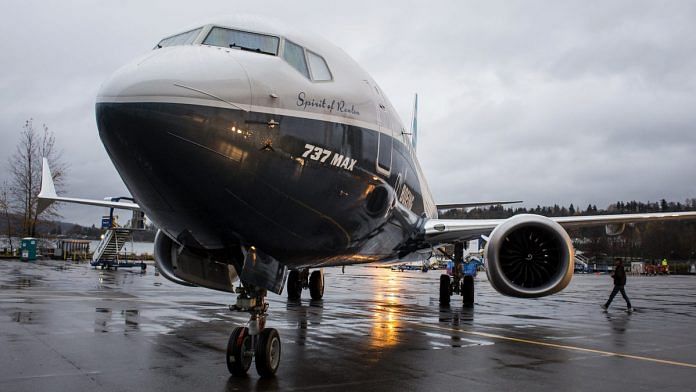Imagine if Toyota Motor Corp. stopped making Corollas, or Coca-Cola Co. stopped making Diet Coke, or McDonald’s Corp. stopped serving Big Macs.
That’s the best way of looking at reports that Boeing Co. is considering halting production of its troubled 737 Max single-aisle jet. Making and servicing commercial airplanes accounts for about 80% of Boeing’s operating income, and the 737 series in turn accounts for about 70% of commercial deliveries. A Boeing that’s not making 737s is shutting down close to half its business.
The company could disclose a decision as early as Monday on whether to further cut production levels or halt the line altogether, the Wall Street Journal reported Sunday, citing people familiar with the matter. Pausing production is increasingly seen as the most viable option, the people were quoted as saying.
You might be surprised that Boeing has been making the 737 Max at all since the global fleet was grounded back in March — but an aerospace production line is more like a perpetual motion machine than something you can switch on and off with a click of the fingers.
On one hand, there’s the question of what to do with Boeing’s workforce and idled facilities. On the other, there’s its vast network of suppliers, which have been pushed hard in recent years to deliver parts more cheaply and quickly than ever before, and as a result have a particularly thin safety cushion if orders dry up.
That’s meant keeping production going has been a better option than stopping the lines altogether, albeit at a reduced rate of 42 a month rather than the 57 a month that were planned for this point. Finished 737s have been stacking up in parking lots like the one outside Boeing’s Renton plant. Right now, there’s in the region of 400 such planes waiting for regulators to give the go-ahead to start flying again, worth about $50 billion at list prices.
There’s still vast uncertainty about when the stalemate will end. Federal Aviation Administration head Steve Dickson took the planemaker to task in an unusually public dressing-down Thursday, saying its timetable for bringing the aircraft back into service looked “not realistic” and was “designed to force FAA into taking quicker action.”
American Airlines Group Inc. last week took the Max out of its schedules through early April. Flights could stay grounded into May in Europe, where the air safety regulator is carrying out its own checks, Ryanair Holdings Plc said last week. The airline is the 737’s biggest European customer.
Put that way, it starts to become clearer why at some point Boeing has to pull the plug. It costs the company hard cash to make each plane, but it’s not collecting anything from customers until regulators give the say-so to resume deliveries. Operating cash flow in the third quarter hit minus $2.42 billion, the worst result on that measure in a generation and below the weakest performance during the 2008 financial crisis.
“At some point you decide you can’t keep pouring money into building airplanes,” said Scott Hamilton, managing director of aerospace consultancy Leeham Co. “Even Boeing with all its financial resources, at some point just has to stop the bleeding.”
Even halting production won’t mean the end of the 737 Max. Airlines don’t want to find Airbus SE turning into a monopoly supplier of single-aisle jets in the mold of the 737 and A320. Such planes are the workhorses of medium-haul, lower-cost routes where they make most of their money. As a result, carriers want the Max to succeed as much as Boeing does.
In theory, Boeing could try to make up numbers with the previous 737 NG models while going back to the drawing board with the Max, but production of that plane has already stopped and it can’t compete economically with the A320neo now streaming off Airbus production lines. As a result, Boeing and the aviation industry as a whole have no option but to keep pushing forward.
That doesn’t mean the road ahead will be easy. The longer the delays go on, the more Boeing loses the trust of passengers and by extension its customers, the airlines. That will eventually show up in a harder bargain driven over future aircraft orders, while suppliers that have helped to fatten Boeing’s margins at the expense of their own in recent years may find an opportunity to fight back.
Valuation of aerospace companies tends to be very long term, and Boeing is still priced well above Airbus on most metrics. Should the current turbulence persist, don’t be surprised to see that premium start to stall. – Bloomberg
Also read: Boeing is considering pausing production of 737 Max



